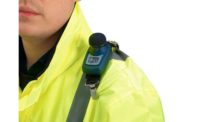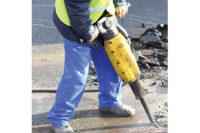If you hear someone say “noise monitoring,” what do you picture? A construction site? An oil drilling operation? What about a concert hall?
If you are like most people, your mind probably goes first to settings with heavy equipment in use versus a more recreational environment, given the historical regulations necessitating hearing protection in those settings.
Realistically, however, those aren’t the only environments where elevated sound levels threaten workers’ or bystanders’ hearing—and where noise monitoring can make a difference from a hearing conservation standpoint.
Beyond construction jobsites and industrial operations, where are you seeing opportunity for noise monitoring right now?
We are seeing a need in some places you might expect, like racetracks, shooting ranges and woodworking shops. But there is actually also a need at some music venues and loud sporting events as well. As visitors, we don’t always think of these environments as being all that loud, but for staff members and performers exposed for extended periods of time, day after day, the harmful effects of elevated noise levels add up. Even so, there is often a lack of hearing protection in these environments due to the lack of regulations or use of protective equipment just not being part of the culture.
Give an example where elevated noise exposure is overlooked.
Take professional musicians, for instance. Since we think of them in the context of music, not “noise,” people often don’t realize just how much noise exposure they are getting. Like 22 million other Americans who work in hazardously noisy environments—about 17 percent of the U.S. full-time labor force—professional musicians are exposed to dangerous sound levels fairly regularly during rehearsals, and performances.1 In combination with the effects of any other recreational noise exposure they encounter in their daily lives, this can add up to irreversible noise-induced hearing loss (NIHL) or incurable tinnitus.
Are there repercussions for facility managers or other employers in these recreational environments if hearing damage does occur?
OSHA estimates that $1.5 million in penalties are handed out annually for failure to protect workers’ hearing, on top of the $240 million spent annually on workers’ compensation claims for hearing loss— but a lot of that is in the construction or industrial settings.
There are instances, however, where performers and staff members in loud recreational environments are seeing some recompense for hearing damage. For example, a High Court judge in the U.K. recently ruled that a viola player forced to give up his music career after developing “acoustic shock” and irreparable hearing damage can sue his employer. It was the first U.K. legal precedent around the condition, but could potentially pave the way for more class action lawsuits internationally.2 The plaintiff is now likely to claim damages for loss of future earnings amounting to at least £750,000 ($955,000).
Why are threats to hearing in “recreational” environments not dealt with more seriously?
Part of the problem may be that the penalties for irreversible damage to workers’ hearing aren’t always that steep. The bigger issue, though, is that there’s not enough recognition that it isn’t just how loud a sound is that matters, it’s the length of time a person is exposed to elevated sound levels, too.
For example, a 2016 study3 found that U.S. student musicians were exposed to daily noise doses that exceeded OSHA and (more stringent) NIOSH standards. While still quite young, the students were already exhibiting a degree of NIHL, with 78 percent showing a “noise notch” at 4000Hz. This notch (see Figure 1) is the characteristic of NIHL that widens and deepens with further exposure if hearing is left unprotected.
If noise levels are such a problem in these environments, what should employers or facility managers be doing to protect people?
The best starting point is to look at environments where noise-exposure control is standard. For instance, OSHA Standard 1910.95 lays out guidelines for occupational hearing protection which includes guidelines for reasonable control of sound levels or how to deploy adequately rated personal protective equipment (PPE) based on employee noise exposure. It also mandates “hearing conservation programs” whenever employee noise exposure reaches certain time-weighted average sound levels, which could certainly be reproduced in recreational environments.
Is there specialized equipment or training needed to these hearing conservation programs in place?
You do need equipment, but not much of it, and it doesn’t require a big investment. For example, lightweight, personal noise-monitoring dosimeters can be handed out to individual employees to find out exactly what noise exposure they experience. You could also use handheld sound-level meters. Based on the findings, a noise exposure profile can be created for each employee and appropriately rated earplugs or other PPEs and controls can be prescribed as dictated by the hearing conservation program.
What else should readers know about hearing protection in non-construction environments?
Hearing conservation programs may be slow to catch on in these environments, but that doesn’t mean they aren’t worth pursuing. Work-related hearing loss is generally an avoidable problem, and hearing is a precious resource that is worth protecting. Take a serious look at hearing conservation if you are operating in a noisy environment, and you’ll find the resources needed to protect workers’ hearing are fairly minimal compared to the benefits that follow.
References
- https://www.statista.com/statistics/192361/unadjusted-monthly-number-of-full-time-employees-in-the-us/
- https://www.healthandsafetyatwork.com/noise/royal-opera-house-breached-noise-regs-acoustic-shock-case-high-court-rules
- https://journals.lww.com/thehearingjournal/Fulltext/2016/06000/Hit_the_Right_Notes_with_Musician_Earplugs.6.aspx



